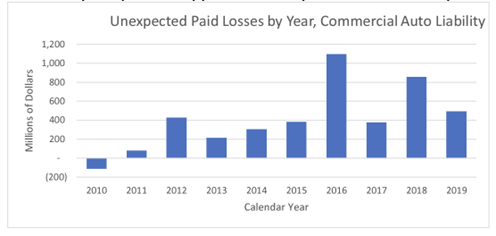KEY TAKEAWAYS:
--Every embedded insurance success I'm aware of satisfies all nine requirements. Otherwise, embedded insurance is like multiplying by zero. The value is nil.
--For one, if the value to the seller or partner is little more than a commission, the insurance becomes a commodity, the commission rises, the value to consumers falls and the product develops a reputation for being scammy.
----------
Insurance distribution is a $72 billion market in property and casualty and $47 billion in life insurance. Even as margins have been competed out of many industries, profits in insurance distribution have remained consistent or even grown. Hence, it’s no surprise that distributing insurance is seen as an attractive business for many companies outside insurance.
The vast majority of insurance worldwide is still distributed through traditional channels – captive agents, independent agents and banks – but many insurers are exploring omnichannel approaches based on meeting customers where they are rather than driving customers to agent channels.
Examples:
- “[We intend to] accelerate our efforts to provide customers with personalized solutions in their channel of choice” – president of personal lines at Travelers (source)
- “People buy houses on the internet, right? They buy cars on the internet. There’s really no reason why they shouldn’t buy homeowners insurance on the internet.” – CEO of Allstate (source)
Enter embedded insurance...
A newfangled term describing an ancient concept
"Embedded insurance" is a new Silicon Valley-ism. Yet embedded insurance predates the insurance agent, who is a product of the 19th century Industrial Revolution. Embedded insurance even predates insurance itself. Before insurance existed, an arrangement called bottomry embedded insurance into a marine loan: If the ship was lost at sea, the shipowner did not have to repay the loan. Hence, the interest rate for sea loans was higher than the interest rate for non-sea loans -- often usurious. Abuse of the usury exception by non-mariners led Pope Gregory IX to ban bottomry in 1236. That's when the insurance industry began to form among merchants in the Hanseatic cities, in Lombardy (Italy) and in London -- on Lombard Street, natch. So, yes, embedded insurance predates insurance itself.
In its broadest form, embedded insurance means distribution via any channel other than captive or independent agents, direct response (call centers and websites), aggregators, price comparison websites and lead generation (e.g., affiliate links). That leaves a wide range of concepts that could be embedded insurance, depending on your definition:
- Affinity marketing – selling insurance via associations, groups, etc.
- Point-of-sale marketing – selling insurance in the flow of selling something else as an opt-in or opt-out
- Providing insurance as part of another product or service, or to people/businesses that purchase another product or service (either included in the product price or opt-in)
- Employer voluntary benefits programs
- B2B2C or distribution to consumers via other businesses
Embedded insurance has been all the rage since some direct-to-consumer start-ups encountered higher-than-expected customer acquisition costs a few years ago. Indeed, a proper embedded offering can be very beneficial for everyone involved, including the consumer. But, like everything in insurance, embedded is easier said than done.
Here are my Nine Requirements for Success in Embedded Insurance. All of the successful embedded insurance offers that I’m aware of have all nine -- or at least a darn good reason why one of the nine doesn't apply. Otherwise, missing any one of the nine is like multiplying by zero – the result is nil.
See also: Embedded Insurance Is Everywhere
1. Solve a Problem for the Seller/Partner
Embedded insurance is typically insurance sold in the context of some other product or service or buying group. Some examples:
- Affinity groups: Associations seeking to grow their membership might value having discounted insurance offerings to encourage members to keep paying dues. Employers might want a shelf of quality voluntary benefits offerings to offer employees.
- Smoothing transactions: A mortgage originator, homebuilder or car dealer might value an insurance offering because their products generally require insurance before a transaction closes (especially if financed), and many consumers turn up without insurance.
- Improving customer experience: Payroll providers often sell workers' compensation insurance in part because the payroll providers have access to critical data for pricing WC insurance -- who is paid what.
- Solving headaches: By giving customers protection against risks, embedding insurance into a product or service can reduce the potential for customer complaints that damage brands, stress out workers and result in demands for refunds. Think of cruise lines or ski operators embedding accident insurance in their sales processes, so customers have a means of getting a refund if their holiday is spoiled.
- Meeting unique needs: Professional associations sometimes sell their “own” insurance that allows their members substantial control over claims settlements, which can be important for professionals who want to fight bogus claims to protect their reputations, even if the economic cost alone might not justify the fight.
If the value to the seller or partner is little more than a commission, the insurance becomes a commodity, the commission rises, the value to consumers falls (less $$ to pay claims) and the product develops a reputation for being scammy.
2. Customer purchase occasion
Insurance is a low-interest product, so it’s hard to mobilize consumers to go out and buy it. Hence, an embedded offer needs a purchase occasion for some other product/service where insurance can naturally and easily be attached or inserted. This works where products are simple but becomes challenging in packaged/bundled products and in commercial insurance, where the agent or broker’s consultative role is not easily embedded into a transaction.
3. Unobtrusive insertion point
Embedded insurance cannot be allowed to distract a customer from buying whatever else they intend to buy, lest the insurance become a friction rather than a solution. Thus, underwriting questions must be few, which often means using third party data to customize and underwrite or simplifying the product to a “one size fits most” offer.
4. Access to unique and relevant data
At the very least, the customer’s identity and basic facts about the consumer or the underlying risk should be known. Ideally, information relevant for rating or product design should be known and provided seamlessly to the underwriter (with appropriate permissions) by the embedded provider. Examples:
- Payroll platforms have information on every employee, their pay and their job – all of which are critical for writing workers' compensation insurance.
- A gig economy platform might have telematics information on drivers and driver ratings, which could be useful in writing motor insurance.
- For homeowners insurance, a homebuilder should know quite a lot about the homes it builds and the people they sell to, making for a smooth application process and eliminating frictions such as inspections.
However, new data can be friction. Data take effort to be gathered, permissions may be required and ratings algorithms might need to be adjusted. The value of the new data needs to exceed the frictional cost of gathering and processing the data.
5. Breadth of product
Embedded partners want all or most of their customers to get a competitive offer for insurance. This presents two issues for insurers that want to distribute via embedded channels.
(A) Broad and competitive risk appetite. This is somewhat in conflict with the "risk selection" capabilities that every good underwriter has spent years honing. Rejecting a customer or providing an uncompetitive price reflects poorly on the embedded partner.
(B) Broad licenses. No embedded partner outside insurance cares that U.S. insurance is 57 different state/territory markets, each with its own rules around product design, seasoning and rate filings.
An embedded offer is valuable only to the extent it can serve a large number of customers.
6. Adjustments to product design, ratings and filings
A smooth integration with an embedded partner is table stakes, but the partner probably also wants unique product features or discounts. Forms may need to be adjusted to reflect a new/different distribution process. Data provided to the underwriter by the partner also have to be considered in ratings. Underwriting rules might need to be flexed to reflect different characteristics of customers that come via partners rather than agents. In admitted insurance, new filings might be required, which can require separate approvals of up to 57 regulators.
A different type of customer might be attracted by the embedded offer compared with traditional channels. Are they the desired customers or not? How do they react to pricing, coverage options being presented and the design of forms?
7. People who can design, build, underwrite and sell
A person with all four skills is a unicorn! The general manager of an embedded partnership needs to be as close to a polymath as is ever found in insurance, a business that I've argued overvalues specialism. Think of the skills needed in a manager of an integration of car insurance with a car seller. The leader needs to be fluent in both insurance and car selling, including their respective customer journeys, sales processes and IT systems. They need to be fluent in designing a solution, building that solution, underwriting the insurance and selling/negotiating with a partner. Not to mention dealing with all the requirements that I’m writing about here. Try doing that at scale.
See also: A New Approach to Embedded Insurance
8. Reasonable split of the economics
One of the biggest challenges in embedded insurance is the embedded partner demanding too much commission. Take travel insurance. In extreme cases, travel providers take 75% or more of the premium when selling travel insurance, leaving little to do what the product is supposed to do – pay claims to consumers. With so much money to be made in distribution, some travel providers aggressively sell insurance, and few customers actually buy it. That’s a shame, because travel insurance can be an excellent product. But too often the product is attenuated as insurers compete for embedded distribution and pay distributors handsomely.
9. Enough volume to cover fixed costs
With all the difficulty and complexity of making a successful embedded product, a slick embedded offering might be really cool in a Silicon Valley sense, but it’s only viable if it scales. The required scale depends on the fixed costs each party incurs and the gross margins they generate from the partnership. Often, the minimum efficient scale is higher than the parties realize or takes longer to achieve than the parties have patience for.
***
The insurance industry is moving toward omnichannel distribution, where products are made available in the consumer’s channel of choice rather than requiring the consumer to go through the insurer’s channel of choice. But there are strong reasons why agents came to dominate distribution of insurance globally starting in the mid-1800s – notably their ability to provide specialist expertise, geographic reach, consultative services and a variable cost structure.
Embedded insurance is surely part of the future of insurance, just as it has been part of the past for millennia. But, as with everything in insurance, embedded insurance isn’t as easy as it might look. Those who figure it out will have a piece of a $120 billion market for insurance distribution (just in the U.S.).
***
Disclaimer
The views expressed are the author's views as of the date of publication and may not consider material economic, market, regulatory and other factors. Certain information has been obtained from sources believed to be accurate and reliable – any of which may be erroneous or change without notice. HSCM has no obligation to update or advise you of any changes or errors. There can be no guarantee that any prediction, projection, forecast, or opinion will be realized. Certain information discusses general information related to the specific industry, activities and trends, or other broad-based economic, market or other conditions and should not be construed as research. The information contained herein does not constitute an offer to buy or sell, or a promotion or recommendation of, any financial instrument or product or strategy. The views expressed may change at any time subsequent to the date of issue hereof.





















